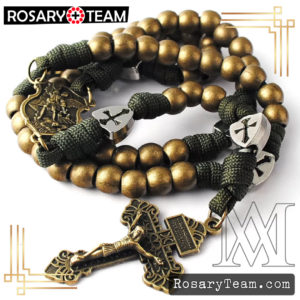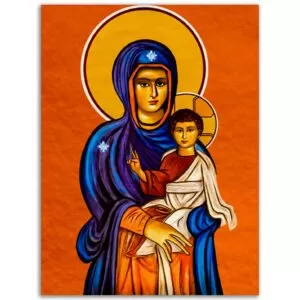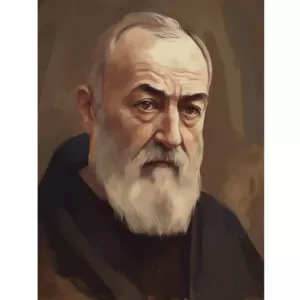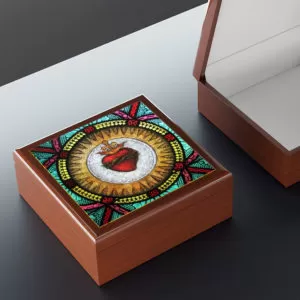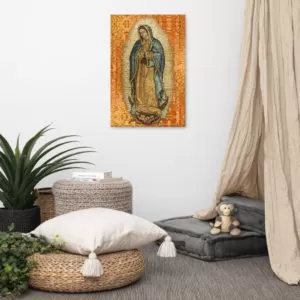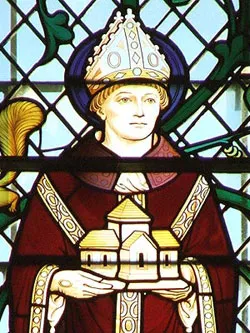SAINT ELIZABETH ANN SETON
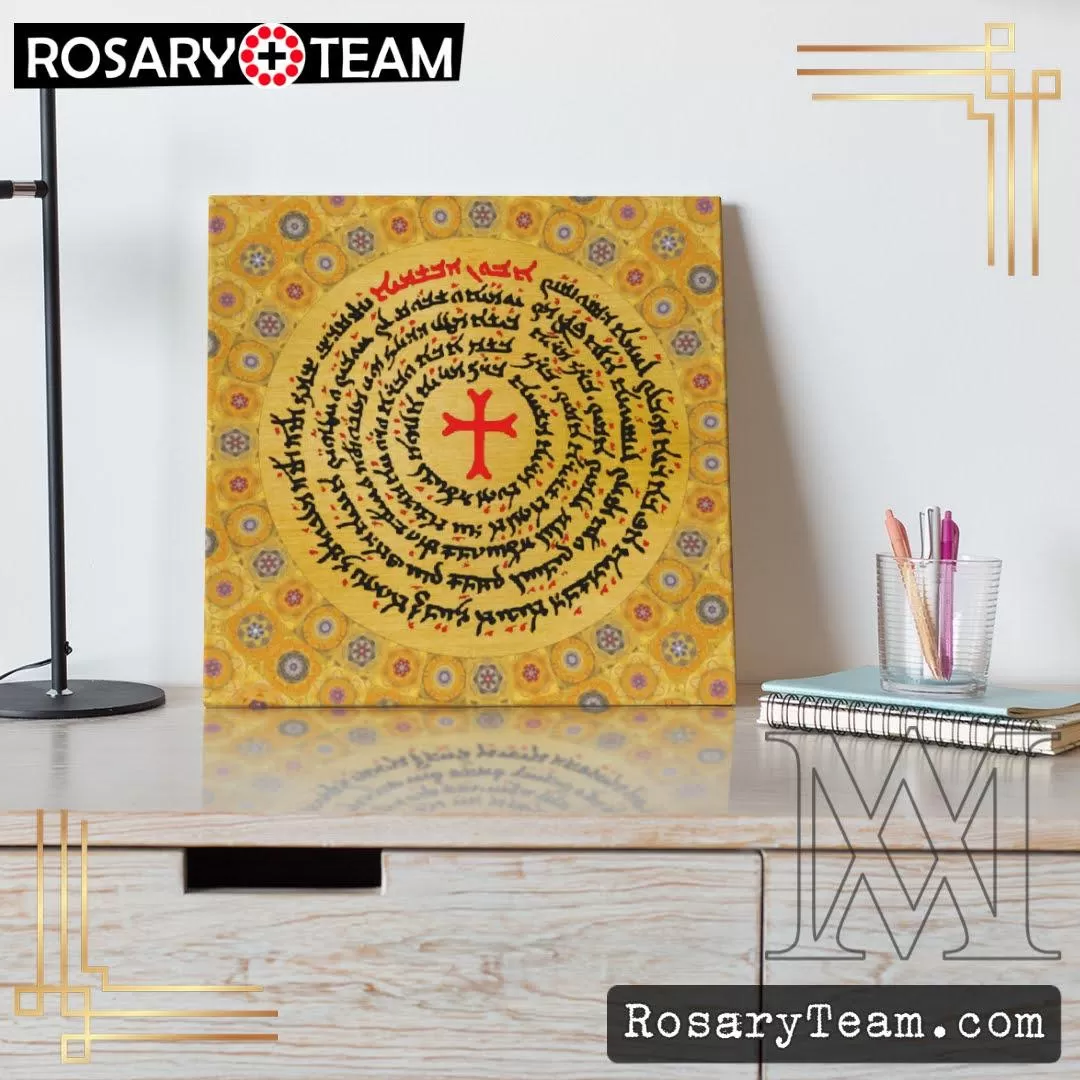
SAINT ELIZABETH ANN SETON
Eary Years|
Mrs. William Seton|
Italy|
Conversion|
Apostolate|
Sorrows|
Last Trial
EARLY YEARS
Elizabeth Bayley was born on August 28, 1774. The previous December had witnessed the dramatic Boston Tea Party, and the following September would see the decisive meeting of the First Continental Congress in Philadelphia. Her father, Richard Bayley, a surgeon of high repute (more devoted to his profession than to his family), was nominally Episcopalian. Her mother, Catherine Charlton, was the daughter of an Episcopalian minister. They had three children, all girls, Mary Magdalen, Elizabeth Ann, and Catherine Josephine, in that order.
Her mother died May 8, 1777, when she was not yet three years old. The following year
Doctor Bayley married Charlotte Amelia Barclay, daughter of Andrew Barclay and Helena
Roosevelt, whose father was the founder of the Roosevelt dynasty in America. Elizabeth came to love and respect her stepmother as much as is possible in such cases, but her father became for her pretty much of a mother and father combined. This was soon followed by another tragedy, the death of her two-year-old sister Catherine. When asked if she were not sad at the loss of her little sister, Elizabeth expressed her early realization of the very purpose of our life in this value of tears by replying, “No, because Kitty is gone up to heaven. I wish I could go there too.” This yearning for Eternity was but the seed of her spirituality, which God Himself would carefully nurture, and with the passing years, render fruitful.
MRS. WILLIAM SETON
At one of the many social functions that this daughter of the American Revolution attended she met “her William”…William Magee Seton. The young New York financier was handsome, charming, successful, but also of extremely poor health due to an advanced case of consumption. He was the oldest son of William Seton, Sr., who headed the commissioning firm of Seton, Maitland and Company. Their courtship began upon William’s return from Italy, where he had spent considerable time as an apprentice to the Filicchi brothers, prominent bankers and good friends of his father. It did not take long for the ailing young Seton to discover the treasure he had in this delightful girl. William and Elizabeth were married January 25, 1794; the bridegroom was twenty-six and the bride nineteen.
SOJOURN IN ITALY
By the year 1803 Elizabeth was twenty-nine and the mother of five children: Anna Maria,
William, Richard, Catherine and Rebecca. Her husband’s health had deteriorated rapidly, due partly to consumption, and partly to the tremendous strain of attempting to recover his business from ruin. He decided, therefore, to go back to the Filicchis at Leghorn, Italy, in the hope of regaining both his health and fortune.
William, accompanied by Elizabeth and eight-year-old Anna Maria, the only child they could afford to take along, departed for Italy aboard the brig The Shepherdess. It was October 2nd, the feast of the Holy Guardian Angels, who must have been instructed to guard with special care these passengers, for on November 18th, after weathering many sicknesses and dangerous storms, The Shepherdess arrived in the port of Leghorn while the evening Angelus bells were ringing in the village.
How excited they were – the sick man, his exhausted wife, and their lonely child – to see land, the Promised Land to them. How anxious to disembark! But no, – one more trial – and this time an almost unbearable one to Elizabeth. The Shepherdess was the first to bring news of the yellow fever which had just broken out in New York. The Setons did not have yellow fever, but the boat lacked a bill of health to show their freedom from it. The Italian health authorities, therefore, placed them under quarantine for a period of thirty days in what was called the “Lazaretto,” nothing more than a tower in the middle of the bay.
During the entire trip Elizabeth was keeping a journal for her sister-in-law Rebecca, and from this we obtain the following details: “How eagerly would you listen to the voice that should offer to tell you where your ‘dear sister’ is now – your soul’s sister. Yet, you could not rest in your bed if you saw her as she is, sitting in one corner of an immense prison, locked in and barred with
as much ceremony as any monster of mischief might be.” “My William and Anna are sound asleep, and I trust that God who has given him strength to go through a day of such exertion will carry us on. He is our All indeed.” “Consider my husband, confined in this place of high and damp walls, exposed to cold and wind, which penetrates to the very bones, without fire, except the kitchen charcoal, which oppresses his breast so much as to nearly convulse him.”
At last on December 19, after thirty days in the Lazaretto they were released. They had been exactly seventy-nine days in confinement, if we consider both the ship-voyage and the dungeon detention. When Elizabeth left the Lazaretto with her poor husband – now at death’s door and borne along by two men – and frail Anna Maria, the sympathetic Italian crowd could not restrain the cry: “O Poverino!”
William Seton was to live exactly eight days after his removal from the Lazaretto to Pisa. He died on the morning of December 27th. Because of the fear of yellow fever, Elizabeth was left to wash and dress alone the body of her dead husband. The next morning, as he was being lowered into the earth in the Protestant burying ground in Leghorn, the disconsolate widow was heard to murmur, “O my Father and my God!” Someone among the bystanders whispered, “If she were not a heretic, she’d be a saint!” This she recorded in her journal.
CONVERSION
In 1805 Mrs. Seton was in a true state of despair in which, distrusting herself, she failed to trust in God. She determined to finish the remainder of her life without any form of religion at all. So on January 6, the feast of the Epiphany, Elizabeth remained at home, self-excluded from any church services, in a truly despondent mood. God, however, in His great mercy and love for this soul which had shown such good will, did not abandon her. Divinely inspired, she picked up a volume of Bourdaloue, the famous French Jesuit priest of the previous century. Turning to his
sermon of the day, which commemorates the homage rendered to the Infant Savior by the Magi
and refers especially to the disappearance of the star at Jerusalem, she read: “It is necessary that our faith be tried, and how? By those abandonments and those privations so common to the souls of the just; and if we are not strong enough to say to God with the Royal Prophet: ‘Try me, O Lord!’ we must, after the example of the Magi, be so holily disposed as to persevere in the midst of trials which it may please Him to send us. We must be mindful of the lights with which we have been favored when it shall please God to deprive us of them. ” ‘We have seen His star!’ I no longer experience what formerly impressed me and drew me to God. But I have seen it and have know its truth and its necessity, and I have been persuaded by it.
“Into whatsoever state of blindness or obscurity I may fall, in whatever ignorance of God’s ways I may chance to be, in whatever state of disorder my faith may be, if I seek out God in the simplicity of my heart, I will surely find Him. It is He Himself who has told me this and His word is expressed in the following: ‘Seek Him out in the simplicity of your heart, for He is found even by those who do not seek Him.’ Oracles of Scriptures which I am not allowed to doubt! Now is there anything more proper to encourage me in the duty of seeking God and of studying out the ways of salvation? “There are in the Church of God doctors and priests, just as there have always been; Their lips, the depositories of knowledge, will teach you the science of sciences,
that of finding God. Can you fail to know Him in virtue of this? And in virtue of this, can you deceive yourself without rendering yourself absolutely inexcusable?’
When she closed the book she cried, “Speak, Lord, for Thy servant heareth! Thine
hour has struck. From now on, no hesitation, no weakness, no procrastination. Holy Church of God, teach, direct, call to thyself thy child, docile and faithful evermore.”
After the necessary preliminaries, on March 14, 1805, Elizabeth made her formal abjuration of heresy at the hands of Father Matthew O’Brien, and in the presence of Mr. Antonio Filicchi, “who offered himself to God as a security for her promises.” She writes: “I returned home light of heart and cool of head, the first time these many long months, but not without begging our Lord to wrap my heart deep in that open side, or lock it up in His little tabernacle, where I shall rest forever.”
BIRTH OF AN APOSTOLATE
On June 9, 1808, Saint Elizabeth departed forever from New York. She was accompanied by her three little girls: Anna Marie, 13, Catherine Josephine, 8, and Rebecca, 6. the only regret she had was abandoning Cecilia Seton to the persecution of the Seton family.
They arrived in Baltimore Bay on the morning of the Feast of Corpus Christi, Father Du Bourg had rented a house on Paca Street, not far from the Seminary, and on the following day they occupied it. It was here that Elizabeth opened her school for girls.
The next year it was obvious that the Paca Street house would not be large enough to
accommodate both the students and the young girls who were asking to join Mrs. Seton in her work. Very soon the number of helpers had reached a total of five, and Archbishop John Carroll with Father Du Bourg, made plans to unite them as a religious community. When this took place, Elizabeth and the young girls took simple vows binding for year; Mrs. Seton was appointed their directress.
SORROWS
The winter of 1811 had been early and cold. Seventeen-year-old Anna Maria Seton was now
a novice in the community. Very mortified, she had not deviated at all from her chosen manner of life, arising at the first sound of the bell, going out in all kinds of weather to nurse the sick. A severe cold which she had contracted brought on a fever which developed into the fatal disease – consumption. By January 30 her condition was so bad that she was given the last rites. The next day little Anna was admitted fully into the Order her mother had founded, her desire of dying a Sister of Charity fulfilled.
As death approached, Anna minced no words with those around her: “See how vain and
foolish is all that is not for Jesus – how it passes!” After she had suffered patiently for three months, the angels took her pure soul to heaven on March 12, 1812. At the time of her death her Mother writes: “Kitty will sometimes kiss me in a transport and ask, ‘Oh mother, won’t we be happy when we are there?’ Little Bec is more given to tears and often says, ‘If I should be left behind!’ ”
Rebecca was not to be left behind as she feared. This youngest of the Seton five loved to skate, and one winter’s day in 1812, when she was ten years old, she slipped and fell on the ice, seriously injuring her hip. All doctor’s care and medication availed nothing and her condition became hopeless. For three long years she was in excruciating pain, unable to walk. When the injury developed a tumor and tuberculosis set in, she began to realize the hopelessness of her condition. She said to her mother, “If the Doctor would say, ‘Rebecca, you will get well,’ I would not wish it. No, my dearest Savior, I am convinced of the happiness of an early death; and to sin no more, ” Little Bec followed Annina on November 3, 1816; she was only fourteen, and the fourth Seton to be buried at Emmitsburg.
LAST TRIAL
Every moment of time brings us closer to death. As soon as we are born we begin to die. The last two years of Mother Seton’s life were spent in dying more intensely, for a slow, continual fever was burning away her strength. “I am going toward dear eternity so gently and almost imperceptibly that, though no evident change of constitution has taken place, I feel the general decay of poor sinking nature enough to shorten my perspective of every scene beyond the present moment.”
On January 2 she received the Last Absolution and Last Indulgence form Father Brute`, who recited near her the Prayers for the Agonizing. Later that afternoon Father Dubois, now the Superior of the Sisterhood, insisted that Extreme Unction be administered. The community assembled. Mother Seton was too feeble to speak to her grieving daughters. It was Father Dubois, who in her stead, recommended Mother to their prayers and asked pardon for any offenses. In her name he told them to be true Sisters of Charity and faithful to their rules. But their Mother then succeeded in raising her feeble voice and said: “I am thankful. Sister, for your kindness…in being present…at this trial,” and then exhorted them firmly, “Be children of the Church, be children of the Church.”
In the very early morning of January 4, 1821, Mother Seton begged her nuns to help her say the prayer she loved so well, Saint Ignatius’ “Anima Christi” Shortly before the hour of two Mother Seton made a great struggle to enunciate her last three words. Every nun listened, in an intense hush. The ejaculation, interrupted by death, was clearly to have been, “Jesus, Mary and Joseph.” But only one word came, the faintest, the most difficult, yet the most
definite she had ever uttered – “Jesus.”
rosary.team





